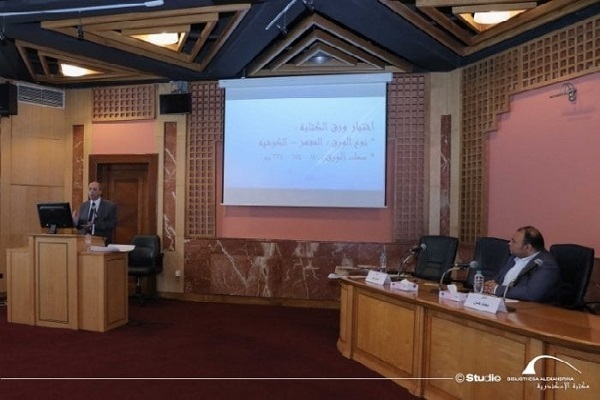Quran Transcription Workshop Held at Alexandria International Book Fair

According to bibalex.org, the 20th edition of the Alexandria International Book Fair opened on July 8 and will run through July 21 at the Bibliotheca Alexandrina. As part of the cultural events accompanying the fair, a specialized workshop was organized on Tuesday under the title “The Art of Quran Transcription.”
A group of Arabic calligraphy scholars and practitioners participated in the session, which focused on the historical development and stylistic evolution of Quranic manuscript copying.
Among the speakers were Ayman Namir, a calligraphy instructor at the Mohamed Ibrahim Arabic Calligraphy School in Alexandria, and Mohamed Hassan, a senior researcher at the Calligraphy Center of the Bibliotheca Alexandrina.
The speakers traced the artistic and technical progression of Quran transcription across different historical periods and highlighted the most influential calligraphic schools and styles that shaped this traditional Islamic art.
Read More:
Mohamed Hassan discussed the shift from handwritten to printed Quranic scripts, noting its coincidence with the rise of Muhammad Ali’s rule in Egypt in the 19th century. He also examined the stylistic differences between the Egyptian and Ottoman schools of Quran writing.
“The Egyptian school has remained a leading force in Quranic script despite the diversity of styles across the Islamic world,” Hassan emphasized. “Many master calligraphers were trained in Egypt, and it is essential to document the history of Quran manuscript production in this country, as has been done in other Arab and Islamic nations.”
Namir also provided a historical account of the Quran’s compilation into a single codex following the martyrdom of several companions who had memorized it during the early Islamic conquests.
He shared that he has transcribed two complete copies of the Quran so far, one of which is currently under review for publication by Al-Azhar. He is presently working on a third copy.
4293394



